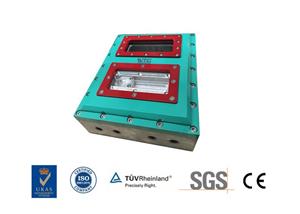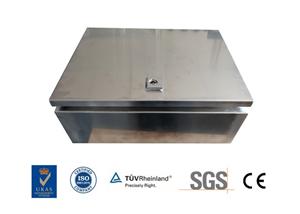What is ultrasound and why can it be used to weld plastics and metals?
What is ultrasound?
Sounds when an object vibrates. Scientists call the number of vibrations per second the frequency of sound, and its unit is hertz. The frequency of sound waves that can be heard by our human ears is 16 Hz to 20 kHz (kilohertz). Therefore, when the vibration of an object exceeds a certain frequency, that is, above the upper limit of the human ear's hearing threshold, people cannot hear it. Such sound waves are called "ultrasonic waves". The ultrasonic frequency used for medical diagnosis is usually 1 to 5 MHz.
Although humans cannot hear ultrasound, many animals have this ability. They can use ultrasound to navigate, hunt food, or avoid dangerous objects. You may have seen many bats flying back and forth in the courtyard on summer nights. Why do they fly without light without getting lost? The reason is that bats can emit 20,000 to 100,000 hertz of ultrasound, which is like a moving radar station. Bats use this radar to determine whether the flight ahead is an insect or an obstacle. We humans did not learn to use ultrasound until World War I. This is the principle of using sonar to detect underwater targets and their states, such as the position of submarines. At this time, people send a series of ultrasonic waves with different frequencies to the water, and then record and process the reflected echo. From the characteristics of the echo, we can estimate the distance, shape and dynamic change of the detected object. The earliest use of ultrasound in medicine was in 1942. The Austrian doctor Dusick first used ultrasound technology to scan brain structures. Later in the 1960s, doctors began to use ultrasound to detect abdominal organs. Ultrasound scanning technology has become an indispensable tool for modern medical diagnosis.
Why can ultrasonic waves be used for welding?
Ultrasonic welding is the conversion of 50/60 Hz current into 15, 20, 30 or 40KHz high-frequency power by an ultrasonic generator. The converted high-frequency electric energy is converted into mechanical motion of the same frequency again through the transducer, and then the mechanical motion is transmitted to the welding head through a set of amplitude changing rod devices. The welding head transmits the received vibration energy to the joint of the workpiece to be welded. In this area, the vibration energy is converted into thermal energy by friction to melt the plastic. Ultrasound can be used not only to weld rigid thermoplastics, but also to fabrics and films. The main components of an ultrasonic welding system include an ultrasonic generator, a transducer / amplifier / welding head triplet, a mold and a frame.
What is the principle of ultrasonic plastic welding?
When the ultrasonic wave is applied to the thermoplastic plastic contact surface, it will generate tens of thousands of high-frequency vibrations per second. This kind of high-frequency vibration reaches a certain amplitude. The ultrasonic energy is transmitted to the welding area through the upper welding piece. The welded interface has a large acoustic resistance, which can cause local high temperatures. Also, due to the poor thermal conductivity of plastics, they could not be released in time and gathered in the welding zone, which caused the contact surfaces of the two plastics to melt rapidly, and after a certain pressure was applied, they were merged into one. When the ultrasound stops working, let the pressure last for a few seconds to make it solidify and form, so that a strong molecular chain is formed to achieve the purpose of welding, and the welding strength can be close to the strength of the raw material. The quality of ultrasonic plastic welding depends on the three factors of the transducer welding head amplitude, the applied pressure and the welding time. The welding time and the welding head pressure can be adjusted. The amplitude is determined by the transducer and the horn. There is a suitable value for the interaction of these three quantities. When the energy exceeds the suitable value, the melting amount of the plastic is large, and the welded material is easily deformed; if the energy is small, the welding is not easy, and the applied pressure cannot be too large.
What is the principle of ultrasonic metal welding?
The principle of ultrasonic metal welding is a special method of connecting the same metal or dissimilar metals by using the mechanical vibration energy of ultrasonic frequency (over 16KHz). When the metal is ultrasonically welded, it neither transfers current to the workpiece nor applies a high-temperature heat source to the workpiece, but it converts the vibration energy of the wireframe into frictional work, deformation energy, and limited temperature rise under the static pressure . The metallurgical bonding between the joints is a solid state welding without melting the base metal. Therefore, it effectively overcomes the phenomena of spatter and oxidation caused by resistance welding. Ultrasonic metal welding machine can perform single-point welding, multi-point welding and short strip welding on the filaments or sheets of non-ferrous metals such as copper, silver, aluminum, and nickel. It can be widely used in the welding of thyristor leads, fuse pieces, electrical leads, lithium battery pole pieces and pole ears.
What are the applications of ultrasonic welding?
Ultrasonic welding cited fields: toy industry, stationery industry, home appliance industry, electronics industry, food industry, communication industry, transportation industry, aerospace and so on.
Applications:
Commodity industry: powder box, cosmetic mirror, hair comb, lock ring, thermos cup, sealed container, spice bottle, water pipe joint, handle, bottle cap, food container, car lampshade, car water tank ...
Toy industry: all kinds of ball toys, stationery, water guns, plastic gifts, music toys, and all kinds of plastic toys ... etc.
Electrical industry: electronic clock, steam iron, vacuum cleaner, telephone, computer keyboard, electric fan, battery, etc.
Automotive industry: headlights, rear-view mirrors, interiors, bumpers, various plastic products, etc.
Electronics industry: mainly produces many plastic-related products such as power supplies, adapters, chargers, and mobile phone cases. The electronics industry is the industry that currently uses the most ultrasonic plastic welding machines




